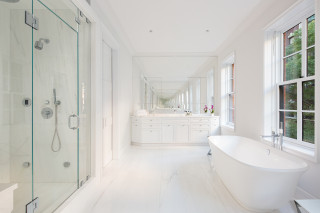Posted by Leonard Steinberg on October 29th, 2012
As I sit observing white crested waves on the Hudson River, bracing for the worst of Hurricane Sandy, there are some real estate lessons to be learned. We all know that waterfront property has its risks, so in that is nothing new. But why is it that most buildings, especially brand new buildings, are so poorly designed to handle tough weather. Here are some items that I have been asking developers to consider for years…..
1) Electronic shutter systems that allow you to close off your windows to protect them from strong winds and flying debris. They are commonplace in Florida, why not here? As a window treatment they would serve to provide privacy, shade and black out too all year round. The Metal Shutter House is the only building that comes to mind.
2) Generators: Buildings should have these in case of emergency. Flooding is usually less certain than power shut-offs.
3) Solar and wind power: even if this provided supplemental energy, it would be very helpful in a storm, not to mention the year-round advantages.
4) Storm water collection/storage: some buildings are installing these systems and they make all the sense in the world. For many reasons.
5) Waterproofing street level and basements: buildings along the river probably should not have a basement as they will always be prone to flooding. But engineering systems to protect buildings from flooding, especially on the street level, should become code.
6) Built in terrace planters: while most planters have sufficient weight to withstand high winds, wouldn’t it be better if they were all solidly secured to the building and engineered in?
7) DYKES: What about deep storm ‘moats’ surrounding buildings to collect excessive storm water with flood walls to contain rising tides: A mini-Venice/Amsterdam could be quite a novelty in Manhattan. The idea of commuting by gondola sounds wonderful! Hey, they do it in the mall in Las Vegas….and they are in the desert.
